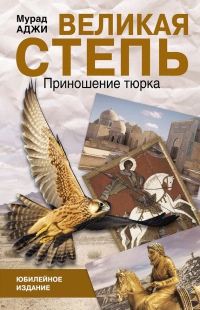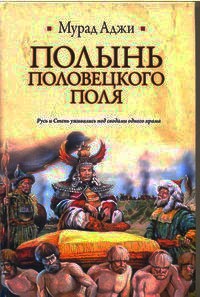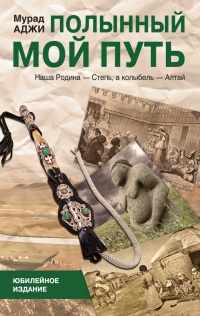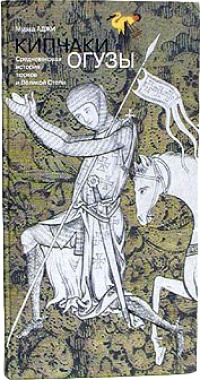Ознакомительная версия. Доступно 18 страниц из 86
No, the Great Migration was most certainly not the spontaneous exodus from the Altai that some write about. Nor was it an invasion. It was not «wild nomads» who left their homelands, but a nation that had become crowded inside the valleys of the Altai. They needed new lands and new expanses in which to grow. It was at this time that the word kipchak first appeared – a «crowded one». This was the name given to the roaming horsemen.
When speaking of the Altai, they meant an entirely different land than that which we mean today: all of Southern Siberia, from Lake Baikal in the east to the Pamir Mountains in the west. That is to say, a huge, mountainous land that stretched to Tibet – this is what they called the Altai.
There are many monuments to these bygone days – witnesses to the past, one might say. Sometimes they are quite surprising. Examine them more closely.
Thus, in 1974, archaeologists found a royal burial mound in north-western China, a region where Turkic-Uighur people live to this day, though they have long since forgotten their true history. The finds from the ancient burial mound confounded the scholars. They were completely taken aback by clay statues – several thousand of them – that showed the clothing of warriors and the accoutrements of their horses. They all had their faces to the north, towards Uch-Sumer, the holy mountain of the Altai. It clearly was not the work of the Chinese.
They were not Chinese, because there were no Chinese living here in the 3rd century BC. Their country lay far to the south, beyond the Great Wall. The clay warriors are portraits of today’s Uighurs, Kyrgyz, Kazakhs, Khakass, and Nogay. Faces such as these are also common among Kumyks, Tatars and Bashkirs, but not among the Chinese.
Yet another example, one that is also extraordinarily striking:
Not far from the town of Rummindei, in Nepal, there is a column with an ancient inscription. The Buddhists will assure you that it is a holy place, for here is carved the name of the founder of their religion – a man who came from the Altai, from the clan of Shakyas. The column was raised in the 5th century BC. It was at this time that the Indians first laid eyes on the Turkis and were surprised by their appearance. This is why they called Buddha the «Turkic God», or the «Buddha Shakyamuni». From this time forward they would depict him with blue eyes, like those of other Turkis.
Today Buddhism is one of the world’s main religions, but time has hidden within it a mysterious trail – one which is, however, still visible to those who know how to look for it. There is a science of religion, a discipline which studies the secrets of different faiths and allows us to understand much about the past.
For example: in their communes, Buddhist monks live according to a strict set of rules, one which is known to scholars. What, one might ask, can this information tell us? As it turns out, it can tell us a great deal. To someone with the proper background it reveals that Buddhism was in fact founded by the Turkis. There is a great deal in common between the belief in Tengri and the teaching of Buddha. There can be only one source for these teachings: the wisdom of the Altaic sages. This is why the Ancient Altai was called the Earthly Paradise, the Flowering Eden: it was here that the world’s great religions began.
They came from the Altai’s Eternal Blue Sky.
Three thousand years ago, spiritual quests began in the Altai. The belief in a God of Heaven was born. The times were harsh. Then, in order to preserve their ancient religion, some of the Turkis migrated to India, Iran and the steppes of Europe. They were called Scythians and Saks. Spiritual protest provided the first roads out of the Ancient Altai.
In the 2nd century, the mass exodus of Altaians onto the steppes began, but the reason for it was quite different: it was economic. By this time, simply too many Altaians had been born, and the mountain valleys were now crowded. The nation needed new farmland, pastures and grasslands.
Turkic speech has been heard ever since in the Caucasus, the Middle East and Europe. It was there to which the horsemen came to open the Dark Ages.
Вступление
Ex oriente lux —
«Свет начинается с Востока»…
и преображает мир
В жизни каждого народа, как и в жизни любого человека, происходят события. Их много. Собственно, жизнь и есть бесконечная череда событий. Но одни незаметны, обыденны, другие, наоборот, ураганом сметают все вокруг. Крушение старого всегда становилось рождением нового. Именно так начинались и так заканчивались эпохи в истории человечества – событиями, потрясающими мир.
Сметающим и ураганным было Великое переселение народов, оно прошло и неузнаваемо преобразило жизнь на евразийском континенте. Будто смерч. После него Древний, или античный мир вступил в новую эпоху – эпоху Средневековья.
Мишель Коломб.
Битва святого Георгия с драконом. Начало XVI в. Лувр
А начиналось Великое переселение тихо и буднично, вдали от крупных городов, однако вся огромная Евразия ощутила его. Тогда тюркские конники устремились в разные стороны света, из Центральной Азии они вышли к берегам Тихого, Индийского, Атлантического океанов. Тысячи километров пути остались у них за спиной. Огромные, ранее почти безлюдные просторы заселили всадники. И не нашлось на свете силы, способной сдержать этот живой поток, хлынувший с Алтая. Остановить его. Все армии уступили ему во встречном бою.
Грандиозное событие… Античный мир был растоптан копытами конников. Они сокрушали старое, чтобы дать людям новую культуру.
Великое переселение народов – это редчайшее явление. В истории человечества такое было лишь раз. Подобного мир не знал ни раньше, ни потом. Победы Александра Македонского, римских императоров и даже знаменитого Чингисхана меркнут перед ним. Они выглядят слишком обычно.
Конечно, Великое переселение возникло не на ровном месте, не само по себе и не вдруг. Семь веков тюркский народ копил силы, семь веков кропотливо готовился к нему, создавая культуру, которая вслед за античной возвысила мир людей. Случайности тут не было. И быть не могло! Народы, не противясь, принимали новую для себя культуру Средневековья. Что же отличало и что притягивало к ней людей?
В первую очередь вера в Бога Небесного – в Тенгри, который покровительствовал тюркам… Вера в Единого Бога была абсолютно новым явлением в жизни человечества. Люди античного мира, как, впрочем, и первобытного, не знали ее. Они были язычниками. Язычество отличало эти эпохи! И многобожие.
В Древней Греции молились Зевсу, Гере, в Римской империи – Меркурию, Юпитеру и другим богам. Перед их изображениями склоняли головы, приносили жертвы, у них просили защиты. Бога Небесного ни один народ, кроме тюрков, тогда не знал. Никто не молился Ему.
Ознакомительная версия. Доступно 18 страниц из 86
























